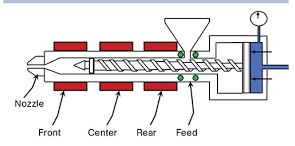A good working definition of process standardization in plastic injection molding: Creating a repeatable process with 100% efficiency that results in standardized products with little or zero scrap.
Any real process requires consistent variables. These include — but are not limited t0 fill time, peak pressure, barrel temperature and fill temperature. Paying attention to such variables ensures that the process that was originally envisioned is the one that eventually becomes reality. Yet there is a step in the process development process that is often either skipped or ignored because of a rush to finish: historical data.
Historical data are a collection of key metrics confirming that standardization has been realized. These metrics also can identify changes that are subverting the original process and help to identify steps that need to be taken to revert back to the original process as envisioned.
There are three main examples of what physical data should be recorded, and how to use that data to identify changes which deviate from molding process standardization. Only then can plastic molders analyze that data to zero in on what has changed, then recommend steps that might be taken to correct the deviations.
Barrel temperature is a typical metric that is commonly included on any report for a plastic injected molding machine. In each zone, a set-point is chosen are and tests are performed on a regular basis to guarantee that the temperature within them remains consistent.

However, barrel temperature itself is not the only key indicator of process issues. For instance, if a proven standardized process starts to run short or producing unfilled parts, verifying set-points might not give enough information as to where the problem lies.
For example, heater bands can fail, leading to inconsistent heat in certain areas of the barrel. The only answer is taking historical barrel temperatures between bands using a band-type thermal indicator. Laser measurements are possible too, of course, but are much less reliable.
It is also important to record melt temperature for each process you run. However, when doing so, it’s essential that the press be turned off. This is to ensure that the barrel is allowed to distribute its heat evenly. This data is helpful, for example, when a heater band is operable but not performing up to expectations.